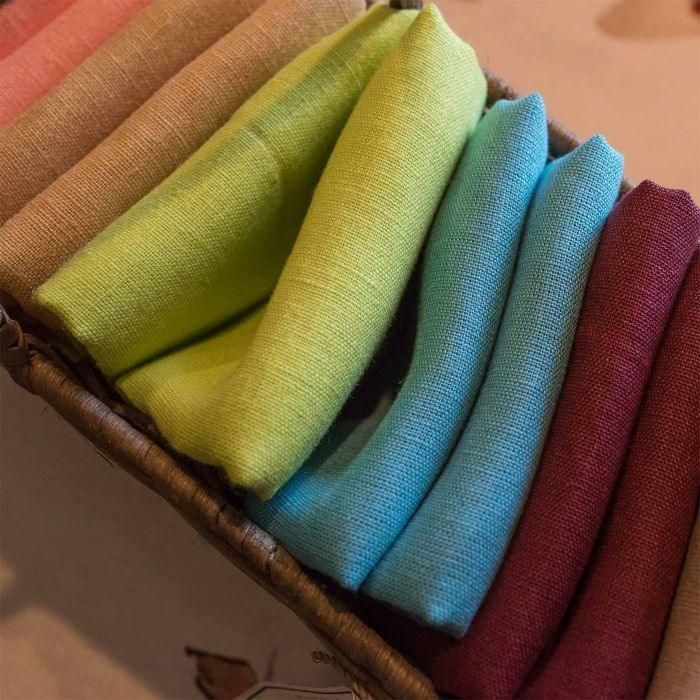
Trending Eco-Friendly Colors and Prints for a Sustainable Wardrobe
Share
In the ever-evolving world of sustainable fashion, colors and prints play a pivotal role in defining seasonal trends while aligning with eco-conscious values. From nature-inspired hues to culturally rich patterns, the choices we make as designers, creators, and consumers reflect our commitment to both style and sustainability. Let’s dive into the trending eco-friendly colors and sustainable fashion patterns that are making waves in sustainable fashion this season.
1. The Rise of Nature-Inspired Colors
Sustainable fashion is deeply rooted in nature, and it’s no surprise that the color palette reflects this connection. Designers are increasingly turning to hues derived from natural elements to evoke a sense of harmony and balance.
a. Earthy Tones
Rich browns, terracotta, and clay-like shades are dominating the eco-friendly fashion scene. These colors exude warmth and versatility, making them ideal for autumn and winter collections. They pair beautifully with neutral tones and add a grounding element to any wardrobe, reflecting the deep connection between fashion and the earth.
b. Ocean Blues
From deep navy to serene aqua, ocean-inspired blues symbolize tranquility and the vastness of water bodies, urging us to preserve our planet’s precious marine ecosystems. These hues evoke a sense of calm and can be styled effortlessly for both casual and formal occasions.
c. Forest Greens
Shades like moss, olive, and emerald are bold, versatile choices that celebrate the lushness of nature. Whether used in flowing fabrics or structured pieces, these colors embody the essence of sustainability and growth, making them a favorite for eco-conscious collections.
d. Sunset Hues
Inspired by the beauty of dusk, shades like coral, burnt orange, and muted pinks add a vibrant touch to sustainable collections. These colors are perfect for transitional seasons, offering a warm and optimistic vibe that resonates with the hope for a greener future.
2. The Return of Natural Dyes
As the industry shifts toward eco-friendly practices, natural dyes are experiencing a resurgence. Popular options include turmeric yellow, indigo blue, and pomegranate beige, offering vibrant hues without environmental harm. Each garment dyed with these materials carries unique variations, reflecting the charm of handmade artistry. The use of natural dyes not only reduces chemical waste but also connects wearers to the artisanal processes behind their clothes.
Natural dyes are derived from plant-based sources, including leaves, flowers, and roots, making them biodegradable and safe for the environment. This resurgence is also encouraging local communities to revive traditional dyeing techniques, creating opportunities for sustainable economic growth.
3. Eco-Friendly Prints: Patterns That Tell a Story
Sustainable fashion isn’t just about solid colors; prints play a crucial role in creating expressive pieces that resonate with both cultural and environmental themes.
a. Botanical Prints
Florals and foliage-inspired patterns celebrate biodiversity and bring a fresh, organic feel to your wardrobe. These prints often draw from native flora, offering a tribute to regional ecosystems and the beauty of nature.
b. Geometric Patterns
Inspired by indigenous art, geometric prints add a contemporary yet meaningful touch to garments. These designs often tell stories of heritage and tradition, bridging the gap between modern fashion and timeless artistry.
c. Animal Motifs
Ethical brands use tiger stripes, bird silhouettes, or other animal-inspired patterns to advocate for wildlife conservation. By incorporating these motifs, designers raise awareness about endangered species and the importance of protecting their habitats.
d. Tie-Dye and Ombre
With eco-friendly dyes and techniques, tie-dye creates abstract patterns while ombre offers elegant color transitions. These techniques not only add visual interest but also highlight the versatility and creativity of sustainable fashion.
4. Cultural Heritage Prints
Sustainable fashion honors traditional techniques and craftsmanship, promoting ethical sourcing and fair trade.
Ikat Dyeing Technique: A Blend of Art and Tradition
Ikat is a traditional dyeing technique that involves resist dyeing yarns before they are woven into fabric. The process requires meticulous planning and precision as sections of the yarn are tightly wrapped to create intricate, blurred patterns. Known for its vibrant eco-friendly fabric designs, Ikat celebrates cultural richness while promoting sustainability through its use of natural dyes and eco-conscious practices.
Other notable prints include block printing, where hand-carved wooden blocks stamp repeating motifs, and kente, known for its vibrant geometric patterns. These prints embody the stories of the artisans who create them, making each piece unique and meaningful.
5. The Role of Eco-Conscious Consumers
Integrating eco-friendly colors and prints into your wardrobe can be both fun and impactful. Here are a few styling tips:
- Pair earthy tones with neutral basics for a balanced and chic look. The warmth of terracotta or the depth of forest green can serve as a base for layered outfits.
- Combine botanical prints with solid-colored accessories to let the pattern shine. This approach keeps the focus on the intricate designs while maintaining a cohesive aesthetic.
- Experiment with layering different prints, such as geometric with animal motifs, for a bold statement. The key is to balance the scale and color palette of the patterns.
- Use sunset hues to add warmth to cooler tones like navy or forest green. This creates a harmonious blend that’s visually appealing and seasonally appropriate.
Consumers can also support sustainable fashion by choosing brands that prioritize ethical practices, such as fair wages, eco-friendly materials, and transparent supply chains. By making informed choices, we contribute to a fashion industry that respects both people and the planet.
Conclusion
Trending eco-friendly colors and prints are more than just aesthetic choices; they represent a movement toward thoughtful and sustainable fashion. By embracing nature-inspired palettes and supporting artisan-made designs, we can create a wardrobe that celebrates style, sustainability, and cultural heritage. The use of natural dyes, heritage techniques like Ikat, and innovative patterns reflects a deeper commitment to preserving the environment and fostering cultural appreciation.
As we navigate the future of fashion, let’s remember that every choice—from the colors we wear to the prints we celebrate—has the power to make a difference. Together, we can create a fashion narrative that’s not only beautiful but also kind to the planet.
